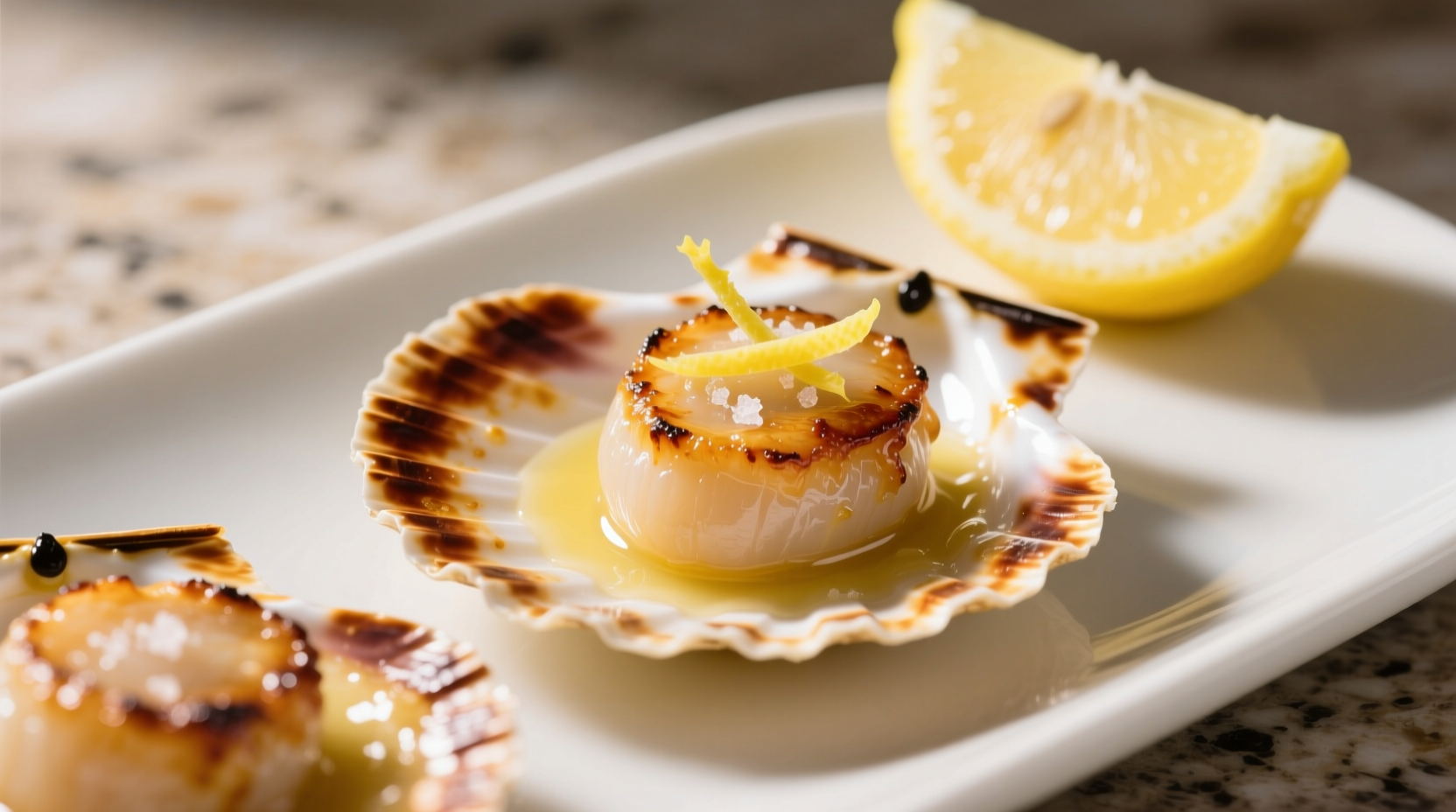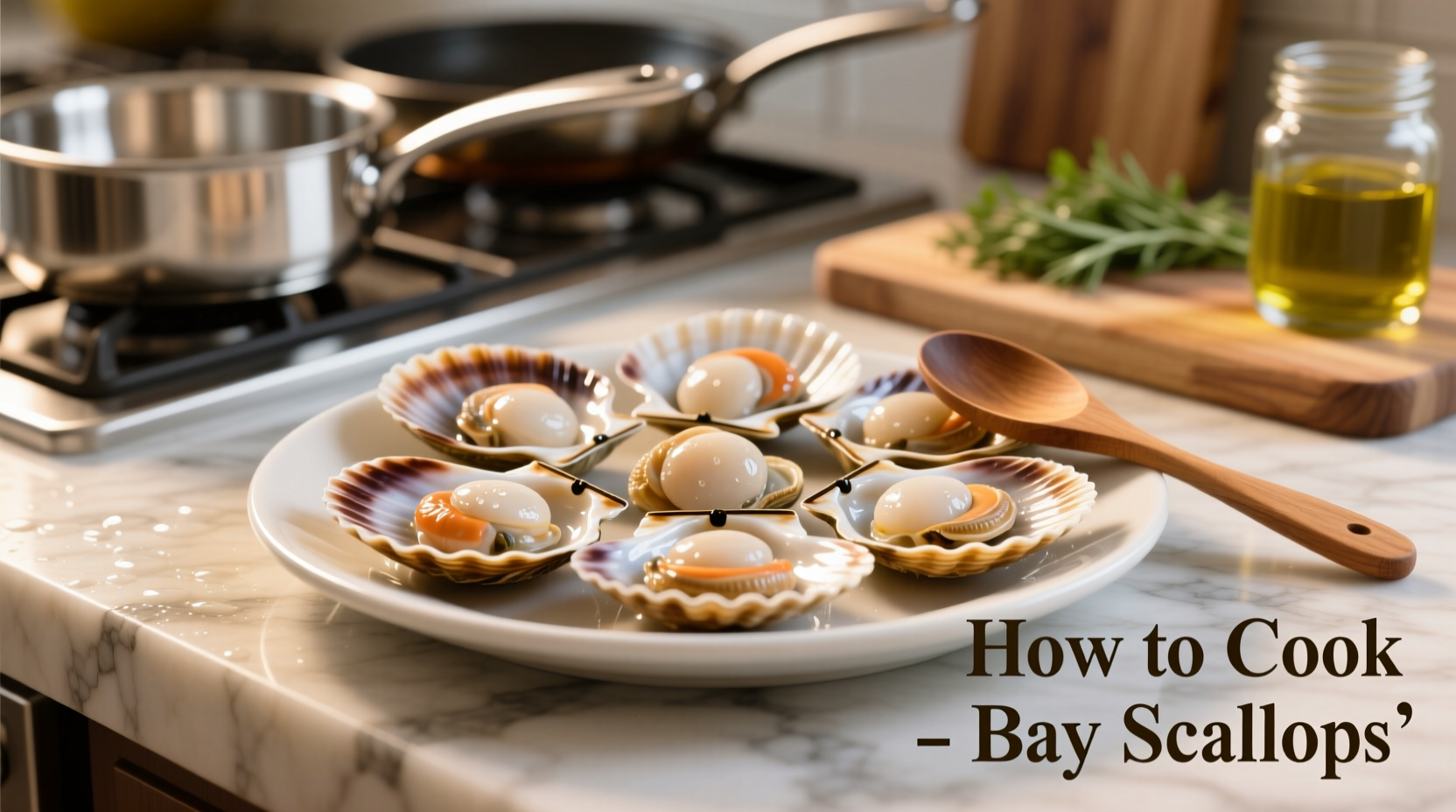Perfectly cooked bay scallops require dry scallops, a screaming hot pan, and just 2-3 minutes total cooking time. Pat scallops thoroughly dry, season simply with salt and pepper, and cook in a hot oil-butter mixture until golden brown on each side. They're done when opaque throughout but still slightly translucent in the center, reaching 115-125°F internal temperature. Overcooking causes toughness—remove from heat just before they appear fully cooked as carryover cooking will finish the process.
Bay scallops offer a delicate sweetness that disappears with improper cooking. As a chef who's cooked everything from roadside seafood shacks to Michelin-starred kitchens, I've seen countless home cooks struggle with this seemingly simple task. The secret isn't complicated technique—it's understanding the science of moisture control and precise timing. Unlike their larger sea scallop cousins, bay scallops cook in mere minutes and demand your full attention at the stove.
Selecting Quality Bay Scallops
Start with the right product. True bay scallops (Argopecten irradians) are harvested from coastal bays along the Atlantic coast, measuring just 1/2 to 1 inch in diameter. They're naturally sweeter and more tender than sea scallops due to their smaller size and different diet.
| Characteristic | Quality Bay Scallops | Lower Quality |
|---|---|---|
| Color | Pearly white to light pink | Yellowish or gray tint |
| Texture | Firm, slightly moist | Slippery, slimy surface |
| Smell | Faint ocean breeze | Strong fishy or ammonia odor |
| Packaging | Dry pack, no liquid | Soaking in liquid ("wet" treated) |
The FDA recommends purchasing scallops that have been properly handled and kept at 40°F or below. "Wet" scallops treated with sodium tripolyphosphate (STP) may look plumper but won't sear properly due to excess moisture. For best results, seek "dry-packed" scallops from reputable fishmongers. According to Seafood Watch from the Monterey Bay Aquarium, responsibly harvested bay scallops come primarily from the Mid-Atlantic region during winter months.
Essential Preparation Steps
Proper preparation makes or breaks your scallop dish. Never skip these critical steps:
- Dry thoroughly—place scallops on paper towels for 15 minutes, gently pressing to absorb surface moisture. This step is non-negotiable for achieving the perfect sear.
- Remove the muscle—the small, tough side muscle (present on some scallops) should be pinched off.
- Season simply—just before cooking, sprinkle with sea salt and freshly ground pepper. Avoid acidic marinades which begin to "cook" the scallops prematurely.
Professional kitchens follow a precise temperature timeline for optimal results:
- 0-15 minutes before cooking: Pat dry and season
- 2 minutes before cooking: Heat pan to smoking point
- Cooking time: 90-120 seconds per side
- Resting time: 2 minutes off heat

The Perfect Cooking Technique
Follow this chef-tested method for restaurant-quality results at home:
Pan Selection and Heating
Use a heavy-bottomed stainless steel or cast iron skillet—nonstick won't provide the necessary browning. Heat 1 tablespoon of high-smoke point oil (like avocado or grapeseed) plus 1 tablespoon of butter over medium-high heat until the oil shimmers and the butter foams but doesn't brown.
Cooking Process
- Place scallops in the pan with adequate space between them (crowding lowers the pan temperature)
- Press gently for 5 seconds to ensure full contact with the pan
- Cook undisturbed for 90-120 seconds until a deep golden crust forms
- Flip with tongs and cook 60-90 seconds more until just opaque
- Remove immediately to prevent overcooking
The National Fisheries Institute confirms that scallops are safe to eat when they reach an internal temperature of 115-125°F. At this point, they'll be opaque but still slightly translucent in the center. Remember that carryover cooking will continue raising the temperature after removal from heat.
Avoiding Common Mistakes
Even experienced cooks make these critical errors with bay scallops:
- Mistake: Using wet scallops
Solution: Always choose dry-packed and pat thoroughly dry - Mistake: Moving scallops too soon
Solution: Let them sear undisturbed for the full 90+ seconds - Mistake: Overcrowding the pan
Solution: Cook in batches if necessary - Mistake: Cooking from refrigerator-cold
Solution: Let scallops come to room temperature for 15 minutes before cooking
Certain cooking methods work better in specific contexts. For example, the pan-searing method described works perfectly for weeknight dinners but isn't suitable for large gatherings where consistency matters. In those cases, a broiler method with precise timing provides more uniform results. Conversely, delicate bay scallops shouldn't be grilled directly on grates—they'll fall through and overcook quickly.
Serving Suggestions
Bay scallops shine with simple preparations that highlight their natural sweetness:
- Lemon-Butter Sauce: After removing scallops, add 2 tablespoons butter, 1 tablespoon lemon juice, and 1 minced shallot to the pan. Cook 1 minute and spoon over scallops.
- Perfect Pairings: Serve with roasted asparagus, sautéed spinach, or cauliflower puree.
- Wine Match: A crisp Sauvignon Blanc or unoaked Chardonnay complements the delicate flavor.
For food safety, never leave cooked scallops at room temperature for more than 2 hours. The FDA recommends refrigerating leftovers promptly in airtight containers where they'll keep for 3-4 days. Reheat gently in a skillet with a splash of water to prevent drying out.
FAQ
Here are answers to the most common questions about cooking bay scallops:











 浙公网安备
33010002000092号
浙公网安备
33010002000092号 浙B2-20120091-4
浙B2-20120091-4